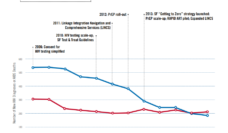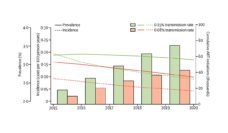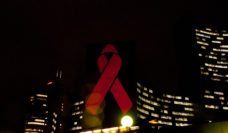This month marks 40 years since the first patients suffering from what would eventually be known as AIDS were reported among young Los Angeles men. The early years of this pandemic were chronicled by journalist Randy Shilts who, in his remarkable 1987 book And the Band Played On, highlighted the rapid spread of this mysterious new disease, and the lack of action to stop it among those in a position to make a difference. The devastating consequences of apathy lend the book its title, conjuring images of musicians serenading passengers on the deck of the sinking Titanic.
Kevin M. De Cock, Harold W. Jaffe, and James W. Curran, all there from the start, published Reflections on 30 Years of AIDS and Reflections on 40 Years of AIDS, noting the significant advances in prevention and treatment, lessons which can be applied to current and future pandemics and acknowledging the worldwide disparities in disease course and outcome which remain significant. In the most recent reflection, they argue “the end of AIDS is not in sight.”
PHP has documented the many changes in HIV/AIDS care and policy over past five years and allowed voices to rise above the band to make a difference in how to think about this continuing pandemic. At this anniversary, we take a moment to summarize our recent coverage.
There’s a need to engage a new generation of young people who were born into a world where HIV is no longer a death sentence for many.
In 2017, PHP dove into the data from a Lancet commentary piece about the need for accurately collected and reported data as the world strives to reach the United Nations’ Programme on HIV/AIDS (UNAIDS) goal to eradicate AIDS by 2030. That same year, researcher Gemmae M. Fix wrote about how politics can get in the way of treatment for people with HIV, and Sean Cahill described how then President Trump’s discriminatory administrative policies made it harder for people to seek care. We have chronicled how the virus affects people who are transgender, sex workers, leaving prison, and those who live in the Deep South or urban neighborhoods.
Profiles during the past five-plus years have included HIV/AIDS activists. Former RED CEO Deb Dugan talked in 2017 about private sector philanthropy and policy to support The Global Fund’s fight against HIV. Physician and writer Rafael Campo shared his story and view in 2019 of how the perception of HIV/AIDS has changed through the years. Kenyon Farrow marked World AIDS Day on Dec. 1, 2020 with some of his thoughts about similar missteps at the beginning of both the HIV/AIDS and Covid-19 pandemics.
PHP continues to emphasize the science of what works in databytes and research pieces about how the culture of HIV care matters, how a barbershop can be a prevention tool, and that leveraging social networks can be a way to increase awareness of pre-exposure prophylaxis. Pre-exposure prophylaxis provides a strong opportunity for HIV prevention, but uptake varies worldwide and its use in campus communities improves when a champion is identified.
There’s a need to engage a new generation of young people who were born into a world where HIV is no longer a death sentence for many. However, inequities in sex education, treatment, access and misperceptions exist, particularly among people of color.
US federal funding for HIV/AIDs continues, but the proportion of the budget devoted to domestic prevention is small. And while worldwide progress has been made, targets for knowing HIV status, treatment, and suppressed viral loads have fallen short of 2020 goals with the impact of Covid-19 yet unknown.
While the band has changed, politics and barriers to optimal care play on. But there’s ample room on the dance floor for those working to “end AIDS as a public health threat” by the time the disease turns 50.
Photo via Getty Images















